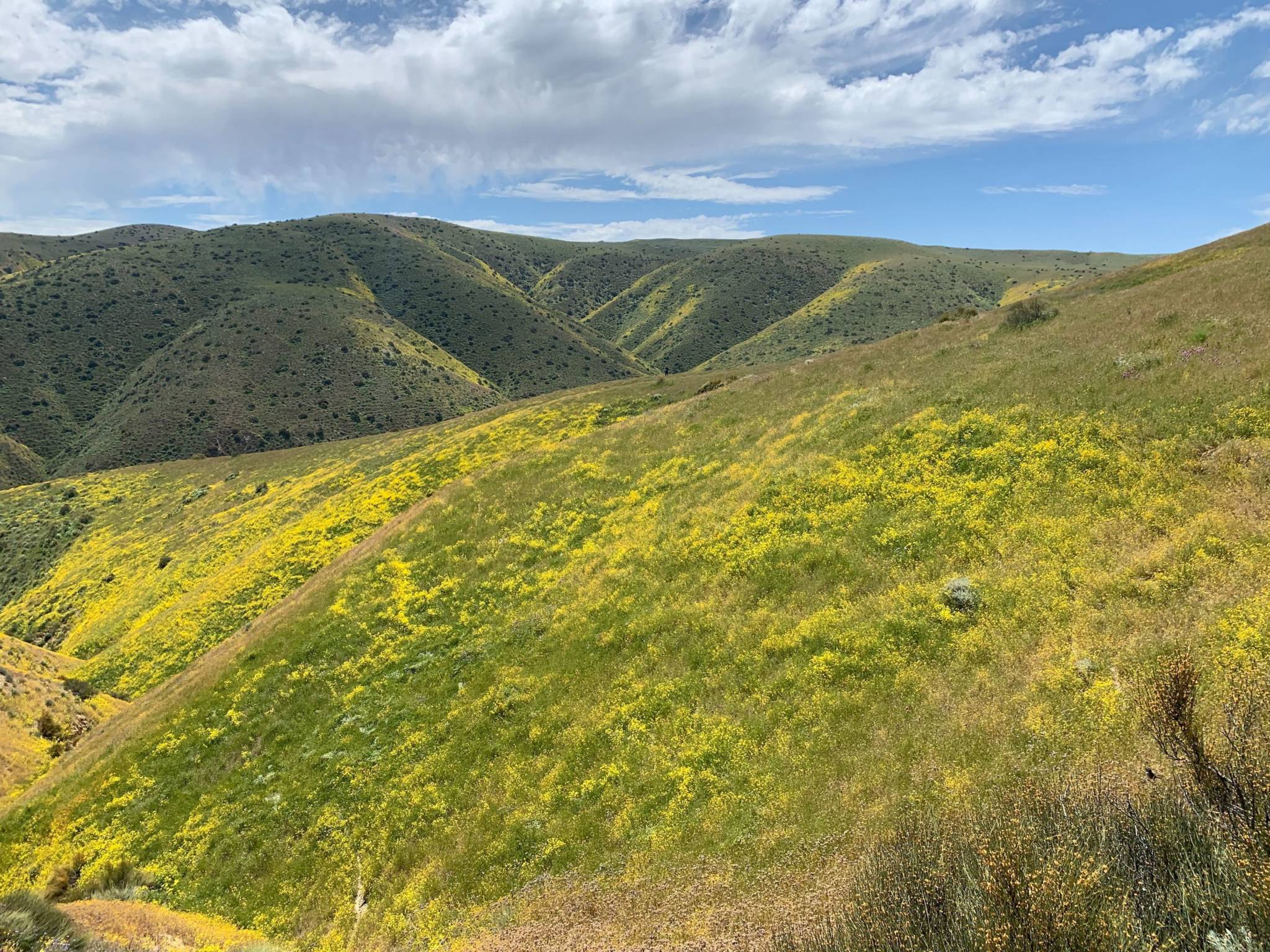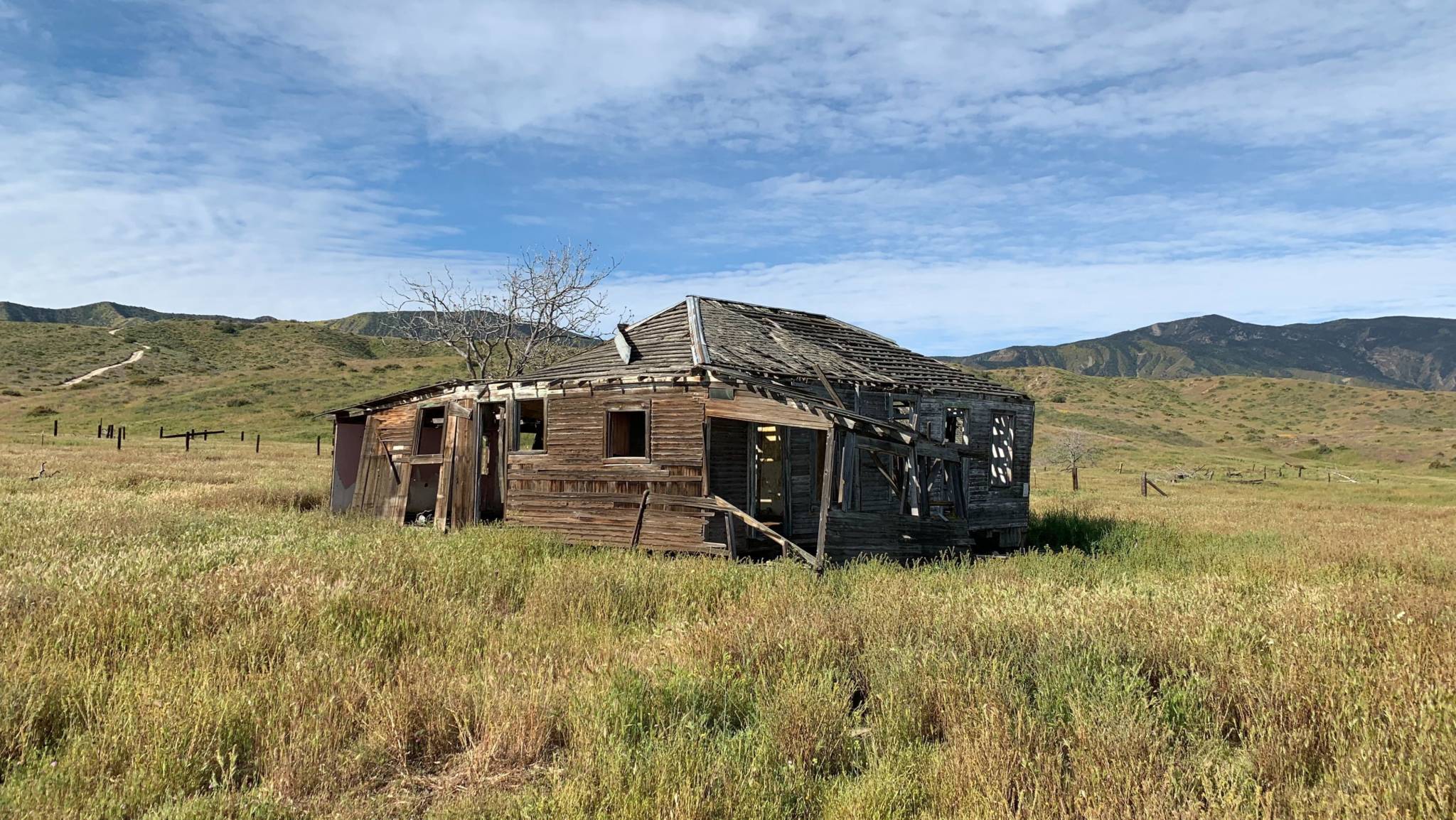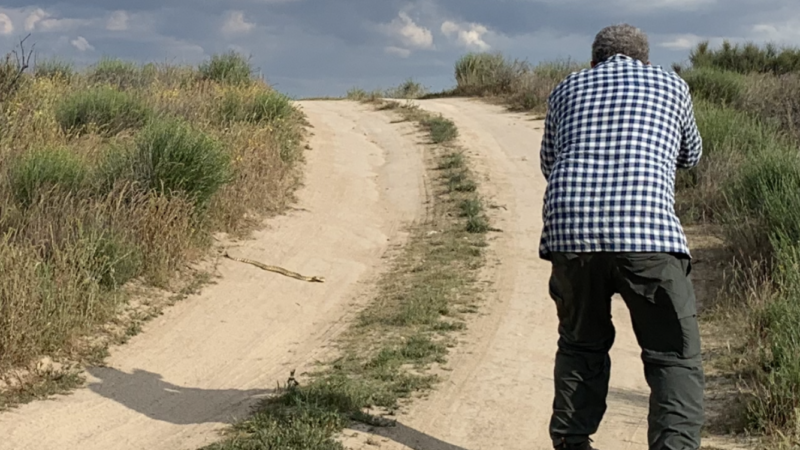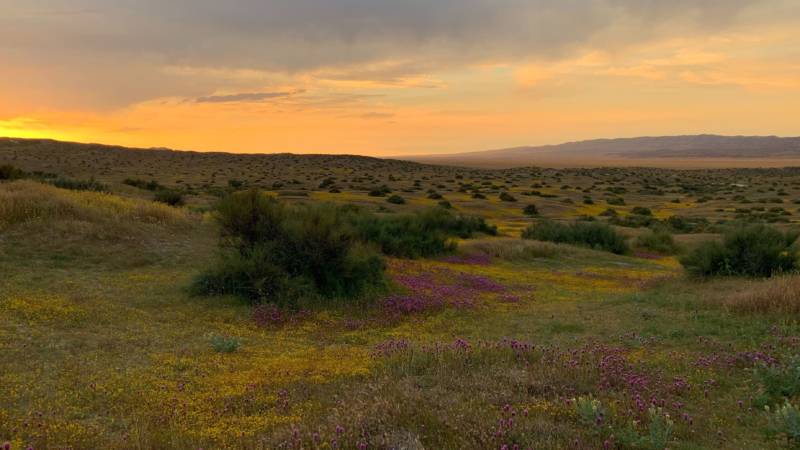Just two and a half hours from Los Angeles, it feels like another world, bouncing along an old jeep road in the remote Temblor Range.
"The rainbow that these hills were for the last month is pretty much gone," remarks my pal Michael Lee Jackson, a professional photographer and amateur explorer, as we drive.
It's his seventh trip to the Carrizo Plain National Monument since mid-March. That was the start of the "super bloom" that transformed Southern California's deserts and prairies into stunning mosaics of yellows, oranges, reds, purples and blues.
Jackson loves documenting the changes. "Other than the shapes of the hills," he says, "it doesn't look like it's the same place at all, it looks like it's between paint jobs."

By now, the frenzied crowds toting selfie sticks trying to capture this quick burst of beauty for their Instagram feeds have thinned out. But there are still some purples and whites — the lupines, the hillside daisies. And on the floor of the massive plain itself a huge carpet of yellow, hundreds of acres in size.
We're happy to have the place mostly to ourselves to explore.
The protected monument, designated by President Clinton in 2001, is massive — some 40 miles long and 15 miles wide — daunting even. Standing on the floor of the plain, taking it all in, it's like standing in an inland sea. To the left lusher mountains closer to the Pacific Ocean, to the right desert hills almost burnt brown, cut by the San Andreas Fault toward their base.
There are few amenities such as signs or marked trails.
As the "super bloom" has started to fade, Jackson is training his lens on the old, decaying ranch houses with their collapsed roofs. There are Depression-era pickups and plows just abandoned in the fields; relics of homesteaders who tried to scratch out a living in a punishingly hot and dry environment.
"Life out here in these places has always been really hard, the elements are so extreme," he says. "People have this idyllic image of what it's like to have a 'little house on the prairie.' The answer is brutal."

Even this early in the year, the afternoon sun already feels brutal. In a few weeks, the mercury will be in the hundreds. All these flowers that sprung up from the rainier than normal winter will wilt and become fuel for summer wildfires.
At one of the few marked trailheads, Wallace Creek, we reapply sunscreen. Hikers are topping off their water bottles. A family in a minivan looks a little unprepared — we warn them to take more water than they think they'll need and to watch out for rattlesnakes. They're out now. We'd already seen two.
Asked where the best place is to see the super bloom, veteran visitor Jackson can't say. There's really no good answer.

"People want a quick panacea for finding the most beautiful stuff," Jackson says later. "But a place like this is different every day."
Jackson has been trekking out here for almost a decade. After another long climb, we've finally reached one of his favorite photography spots, a pull out and makeshift campsite perched on the rim of a steep canyon high in the Temblor Range.
There are still some lingering fields of yellow across from and beneath us.
"I was here before it bloomed, here after," he says, his shutter snapping. "And I can tell a bigger story about this place now."
What's that story?
It's about nature's impermanence, he replies, about nature's constantly evolving artwork. Its a story that most people will never see, once the super bloom fades to brown.
9(MDAxOTAwOTE4MDEyMTkxMDAzNjczZDljZA004))
